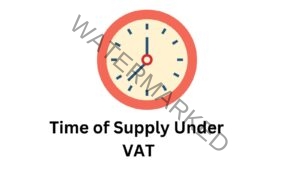Introduction
Multinational Enterprises are firms that have transactions across international boundaries. In the transactions, some assets attract tax from various countries.
What is the problem?
Taxation of Multinational Enterprises (MNEs) has two problems:
- In many countries, Multinational Enterprises (MNEs) are expected to pay tax because each of the governments want a piece of the taxable asset. Essentially, every country wants to exercise right to tax the taxable asset. This may result in taxation of a single taxable assets in more than one country.
- Owners of the taxable assets are not willing to part with any portion of the taxable asset. Therefore, they employ strategies to ensure that they pay little tax or no tax at all.
These two problems create a necessity for tax professionals to closely scrutinise activities of MNEs.
Who should be interested?
Two persons that are the tax experts (consultants, auditors, lawyers etc.) and tax officers, should know the strategies employed by taxable asset owners to minimize the amount of tax paid in each country. There are reasons for this.
- As a tax expert, you will be called upon to defend your client in disputes between the taxpayer and the tax authority.
- As a tax officer, you will be called upon to query strategies used by the taxable asset owners.
What items are used in the tax minimisation strategies?
The following are twenty-two (22) items used by MNEs in their tax minimisation strategies that should be of interest to any tax expert or tax officer:
- Use of lobbyists to influence the home government’s domestic and international tax policy in their favour.
- Utilisation of losses carried forward from previous years of income in every country that they operate in.
- Use of tax credits from international operations in the home country.
- Country by Country tax reports and the consolidated tax reports.
- Use of employee compensation schemes where instead of being paid cash for their services, the employees are compensated otherwise for example with shares in the company.
- Domestic tax compliance history of the company.
- World-wide tax compliance history of the company.
- The particular industry of domestic tax compliance.
- The particular industry global tax compliance.
- Local registration in the country that the MNEs operate in.
- Keeping, maintaining and retaining tax records and documents within the country and globally.
- Global business locations especially if the firms have location of branches or related companies in low tax jurisdictions such as tax havens.
- Regularity of filing of tax returns.
- Consistency of tax payments.
- Compliance with Transfer Pricing documentation requirements e.g. Transfer Pricing Policy documents.
- Transactions with related parties.
- Financial statements for such items as inter-company transactions, business turnover trends, business cost trends etc.
- Contracts with related companies.
- Business strategies e.g. entry strategies.
- Global size of the company.
- Place of the company in the home country’s economic structure.
- Company’s core business activity.
Note that these are not the only items used in strategies to minimise tax payments for internationally generated assets. There are many other strategies and each case is treated on its merit.
Feel free to send us tax and investments in Kenya questions or topics via email taxkenya@gmail.com that you would wish to be covered in this Website.
Disclaimer
This post is for general overview and guidance and does not in any way amount to professional advice. Hence, www.taxkenya.com, its owner or associates do not take any responsibility for results of any action taken on the basis of the information in this post or for any errors or omissions. Kenyan taxpayers must always rely on the most current information from KRA. Tax industry in Kenya is very dynamic.



